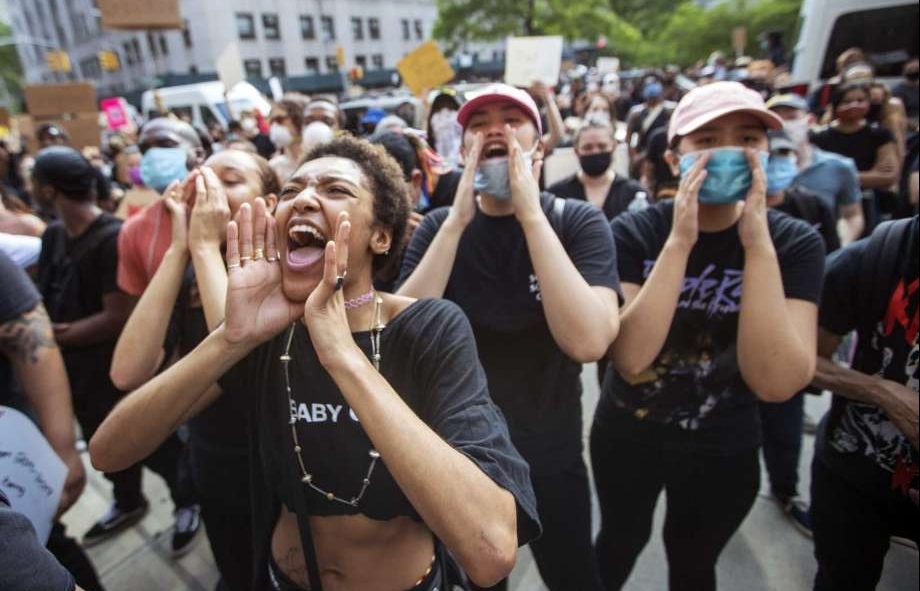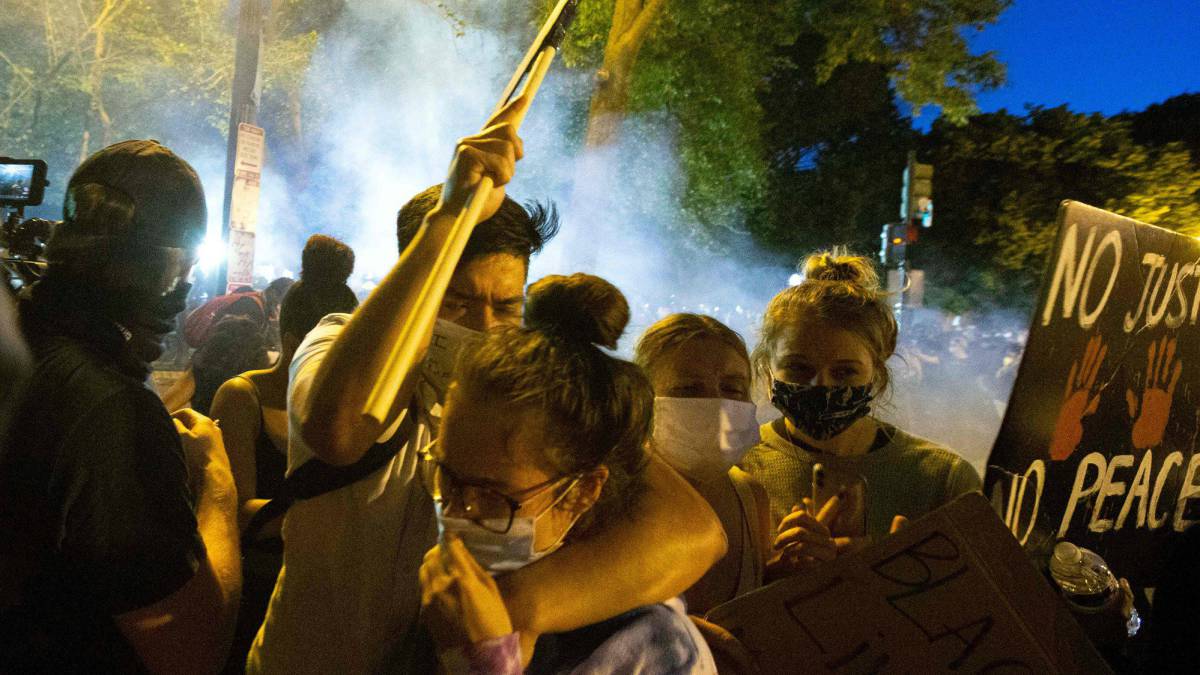Facts about ANTIFA?
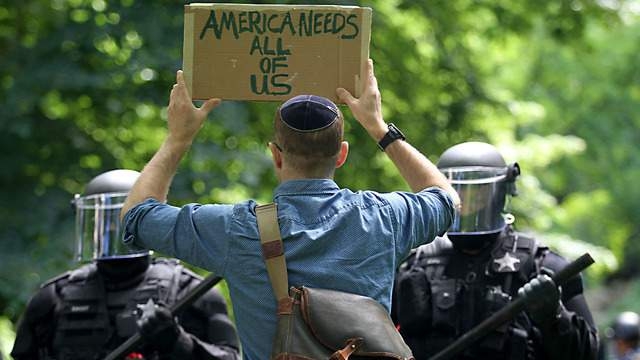 |
| An "antifa" protester holds up a sign in front of riot police. |
As protests over George Floyd's death spread across the country, officials have blamed the violent nature of some demonstrations on members of a controversial group known as Antifa.
Speaking at the Kennedy Space Center on Saturday, President Donald Trump said "the violence and vandalism" seen across the country "is being led by Antifa and other radical left-wing groups who are terrorizing the innocent, destroying jobs, hurting businesses and burning down buildings."
What is Antifa?
Antifa is short for anti-fascists. The term is used to define a broad group of people whose political beliefs lean toward the left -- often the far left -- but do not conform with the Democratic Party platform. The group doesn't have an official leader or headquarters, although groups in certain states hold regular meetings.
Antifa positions can be hard to define, but many members support oppressed populations and protest the amassing of wealth by corporations and elites. Some employ radical or militant tactics to get their message across.
Scott Crow, a former Antifa organizer, says the "radical ideals" promoted by Antifas are starting to be adopted by liberals. "They would never have looked at (those ideals) before, because they saw us as the enemy as much as the right-wingers."
The majority of Antifa members don't fall into a stereotype. Since the election of President Trump, however, most new Antifa members are young voters.
How long have Antifa been around?
Some Antifa groups date the origins of their movement to fights against European fascists in the 1920s and 1930s. Mark Bray, author of Antifa: The Anti-Fascist Handbook, says the modern American Antifa movement began in the 1980s with a group called Anti-Racist Action. Its members confronted neo-Nazi skinheads at punk gigs in the American Midwest and elsewhere. By the early 2000s the Antifa movement was mostly dormant - until the rise of Donald Trump and the alt-right.
Where do they protest?
Members have been spotted at high-profile, right-wing events across the country.
In August 2017 members of the group showed up in Charlottesville, Virginia, to condemn racism and counter protest hundreds of white nationalists opposed to the removal of a Gen. Robert E. Lee statue. The protests turned violent when James Fields, who is not a member of Antifa, plowed his car through a crowd of counter protesters, killing Heather Heyer.
Earlier that year, Antifa protested the appearance of Milo Yiannopoulos, an alt-right provocateur, at the University of California, Berkeley. They also protested President Donald Trump's inauguration in January 2017.
While it can be difficult to distinguish Antifa activists from other protesters, some dress head to toe in black. Members call this the "Black Bloc."
They also wear masks to hide their identities from the police and whomever they are protesting.
Why are they controversial?The group is known for causing damage to property during protests. In Berkeley, black-clad protesters wearing masks threw Molotov cocktails and smashed windows at the student union center where the Yiannopoulos event was to be held. Crow, who was involved with Antifa for almost 30 years, said members use violence as a means of self-defense and they believe property destruction does not equate to violence. "There is a place for violence. Is that the world that we want to live in? No. Is it the world we want to inhabit? No. Is it the world we want to create? No. But will we push back? Yes," Crow said. Levin said Antifa activists feel the need to partake in violence because "they believe that elites are controlling the government and the media. So they need to make a statement head-on against the people who they regard as racist." "There's this 'It's going down' mentality and this 'Hit them with your boots' mentality that goes back many decades to confrontations that took place, not only here in the American South, but also in places like Europe," he added. White nationalists and other members of the so-called alt-right have denounced members of Antifa, sometimes calling them the "alt-left." Many white nationalists from the Charlottesville rallies claimed it was the Antifa groups that led the protests to turn violent. Peter Cvjetanovic, a white nationalist who attended the Virginia protests, said he believes the far left, including Antifa, are "just as dangerous, if not more dangerous than the right wing could ever be." |
How do you pronounce Antifa?
According to Bray, there are multiple different pronunciations. In the United States most people say an-tee-fa. In Europe it’s sometimes referred to as anti-far, which Bray believes has been influenced by the Italian word antifascismo. He says an-tee-fa but doesn’t correct people who pronounce it differently.
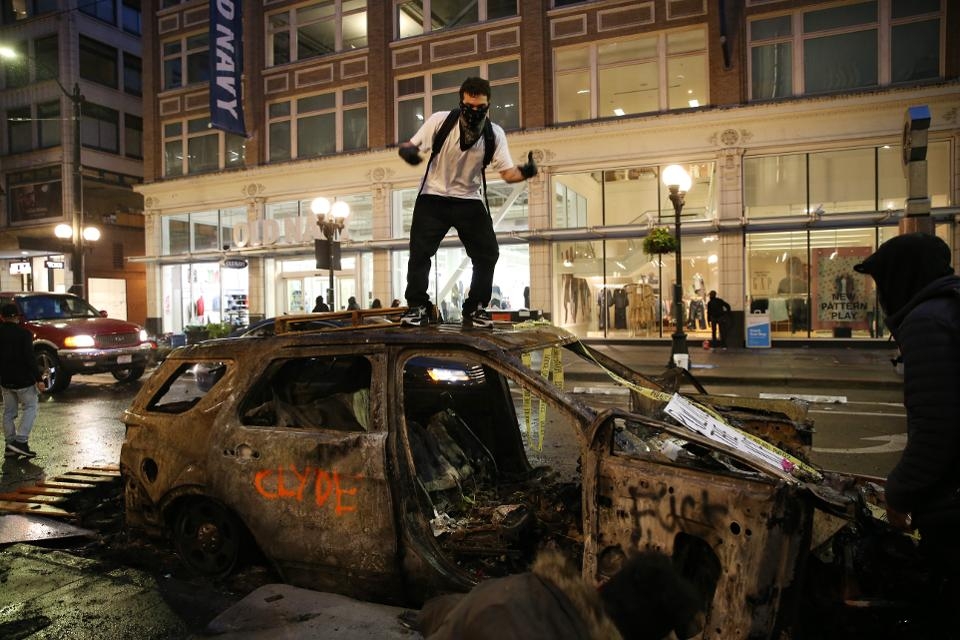 |
| SEATTLE, WA - MAY 30: Protesters riot in the streets following a peaceful rally expressing outrage ... [+] GETTY IMAGES |
What are they opposed to?
Neo-Nazis, Neo-fascism, white supremacists and racism, and these days the movement that encapsulates some of those ideas: the alt-right.
We spoke to secret Antifa groups in Oregon. They said they come from a variety of political backgrounds but they were united in their opposition to fascism, and they have an anti-government streak. They said they see creeping authoritarianism in the current American administration that they are looking to build "a movement that really insulates us from the policies of Donald Trump".
"It's not just resisting the federal administration but also resisting moves that can lead to fascism," one member told us, "and those happen locally whether from local officials or from local alt-right movements."
Why do they all dress in black?
Like other protest movements dating back to Cold War era West German anarchists, Antifa supporters will often dress all in black, sometimes covering their faces with masks or helmets so they can’t be identified by opposing groups or the police. It's an intimidating tactic – known as a "black bloc" – which also allows them to move together as one anonymous group. There are also offshoots - one Antifa group in Oregon said they also have a "snack bloc" of people who provide food and water for their allies during protests.
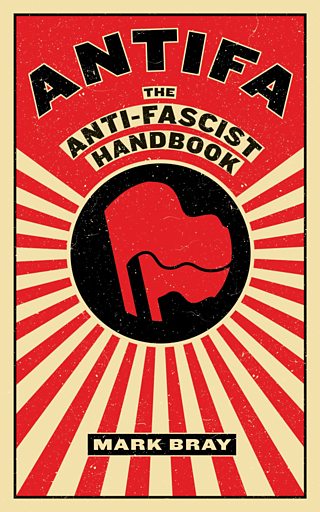 |
What tactics do they use?
Antifa look to disrupt alt-right events and far-right speakers. They use a variety of tactics to do this – including shouting and chanting and forming human chains to block off right-wing demonstrators. Some are unapologetic about their online tactics, which include monitoring the far right on social media. They also release personal information about their opponents online, commonly known as "doxxing" – they’ve gotten some alt-right supporters fired from their jobs after identifying them online.
Antifa groups also use more traditional forms of community organising like rallies and protest marches. The most extreme factions will carry weapons like pepper spray, knives, bricks and chains – and they don’t rule out violence.
How violent are they?
Their willingness to use violence marks out Antifa from many other left-wing activists, although the Antifa members we spoke to said they denounce the use of weapons and violent direct action. They said if violence does occur, it’s as a form of self-defence. They also make historical arguments to justify their position. For instance, they ask, what if opponents of the German Nazi Party had been more forceful in their opposition in the 1930s, could World War Two and the Holocaust have been averted?
Antifa have been directly and sometimes physically confronting the far right on the streets and, in some cases, they have been successful in postponing, cutting short or cancelling rallies and speeches up and down America.
Do women join Antifa groups?
Traditionally direct street action has been a mostly male domain, but significant numbers of women are members of Antifa groups and have been arrested at counter-demonstrations against the alt-right in California and elsewhere. Female members of Antifa groups told us they view the current administration as being anti-women. They point to White House policies on immigration, affordable health care, abortion rights and voting rights and say they disproportionately affect women and minorities. We spoke with Sunsara Taylor from the Antifa group Refuse Fascism who told us women are motivated to respond to "what hits them".
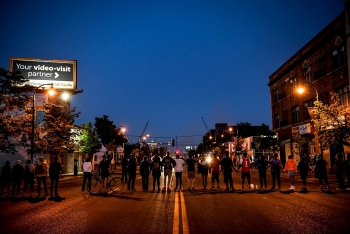 | What is Antifa, designated as terrorist organization, Trump says The United States will be designating controversial group known as Antifa a terrorist organization, President Donald Trump announced. What is Antifa? |
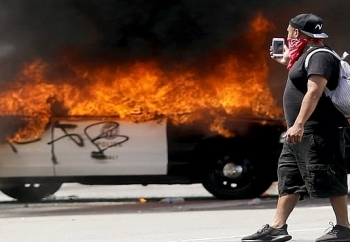 | George Floyd death: More than 12 cities defied curfews in US More than 12 cities impose curfews caused chaos and fury across the US as US anti-racism protests began since George Floyd's death. |
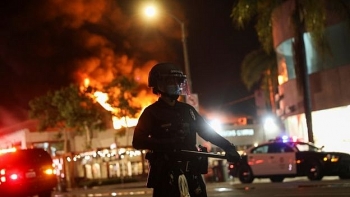 | The death of Floyd: Curfews spread across America Protests demanding justice for George Floyd continue across the U.S., with cities bracing for more clashes with police and destruction. President Trump silent as curfews ... |
In topics
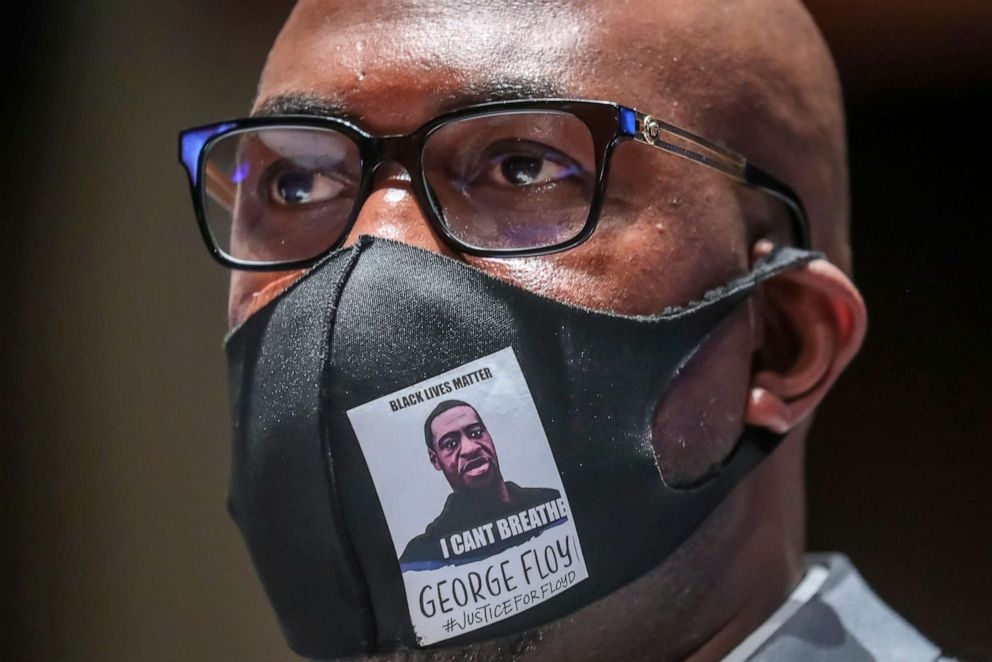 World
World
Protests in America update: George Floyd's brother calls on Congress to act over police violence
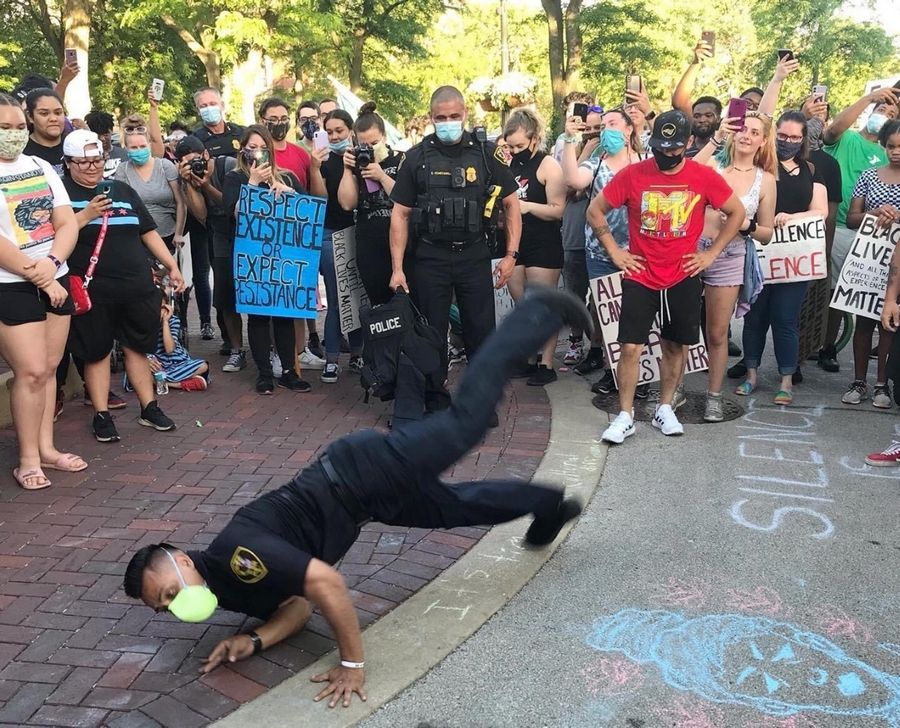 World
World
Illinois police officers join unexpected dance battle with peaceful demonstrators
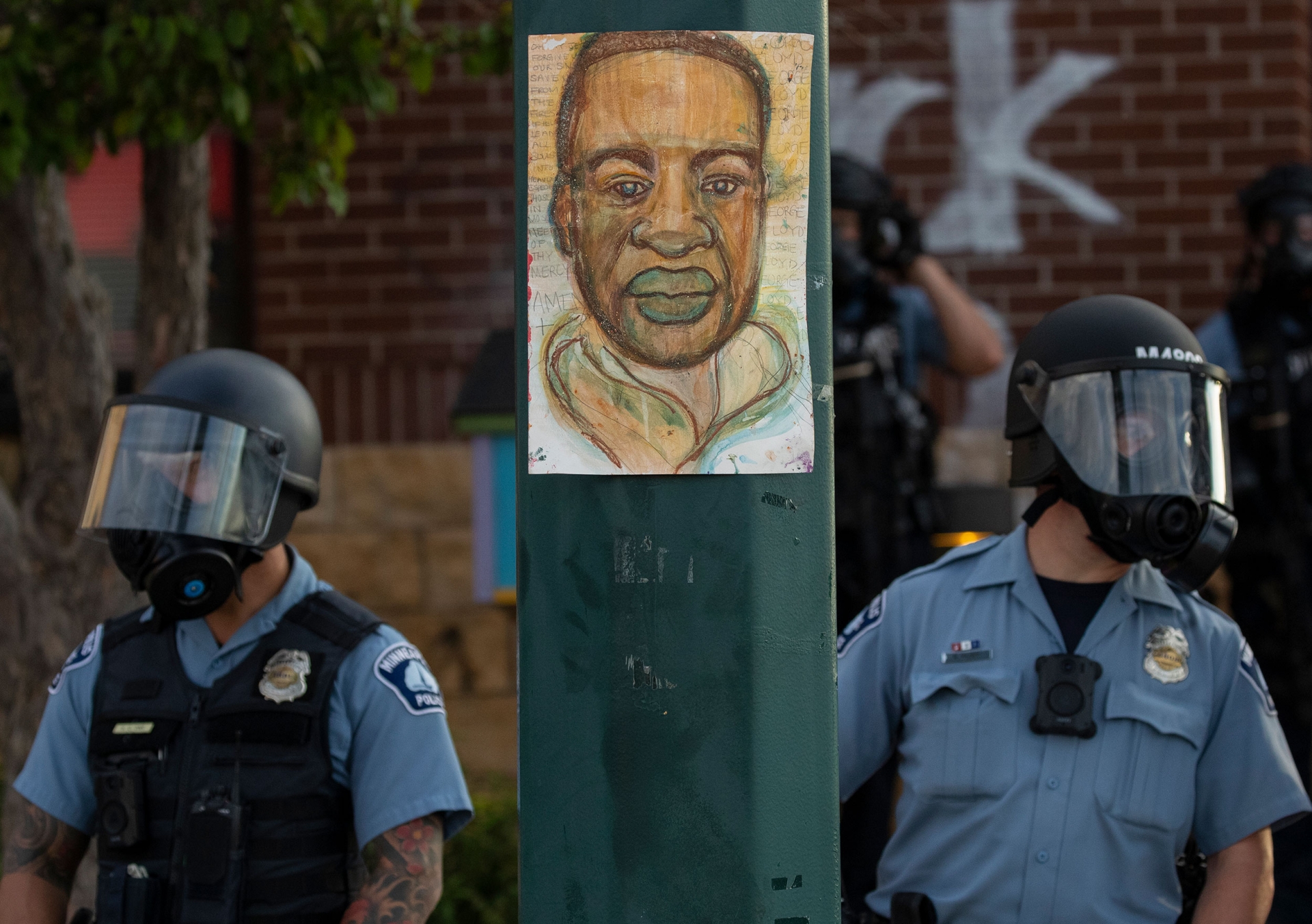 World
World
Protests in America update: Minneapolis city council is looking to move funding from police
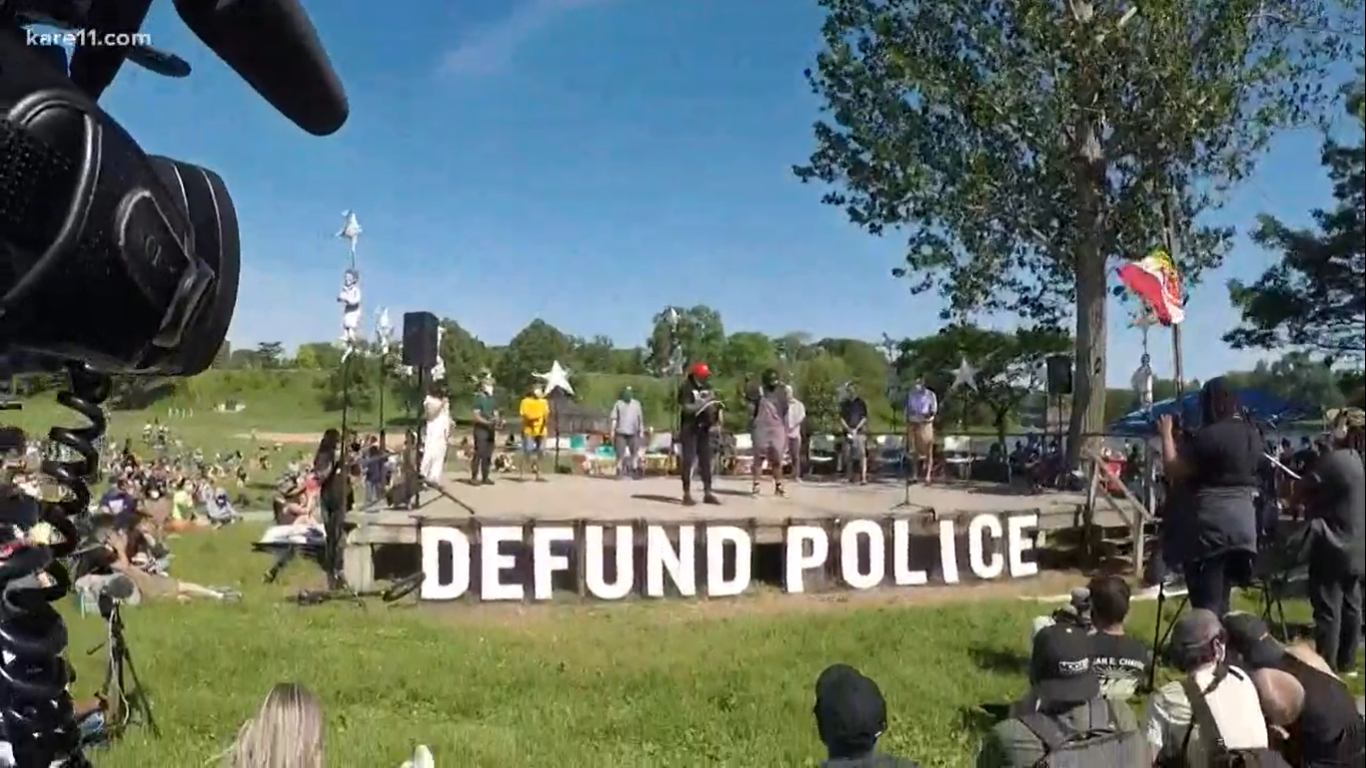 World
World
Protests in America: Minneapolis city council pledges to dismantle police department
Recommended
 World
World
Pakistan NCRC report explores emerging child rights issues
 World
World
"India has right to defend herself against terror," says German Foreign Minister, endorses Op Sindoor
 World
World
‘We stand with India’: Japan, UAE back New Delhi over its global outreach against terror
 World
World
'Action Was Entirely Justifiable': Former US NSA John Bolton Backs India's Right After Pahalgam Attack
Popular article
 World
World
US, China Conclude Trade Talks with Positive Outcome
 World
World
Nifty, Sensex jumped more than 2% in opening as India-Pakistan tensions ease
 World
World
Easing of US-China Tariffs: Markets React Positively, Experts Remain Cautious
 World
World




